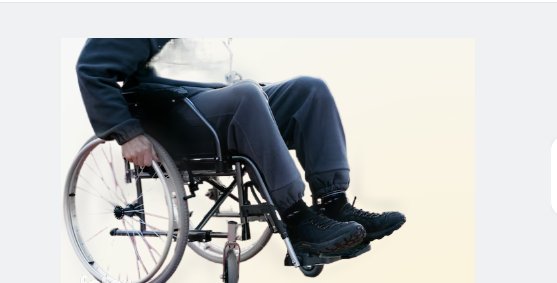Paralysis of hands and feet
Physiotherapy is a treatment method that restores, maintains and maximizes a patient's movement, function and health.Physical therapy helps with physical recovery, injury prevention, and health and fitness.

What is paralysis?'
Paralysis occurs when voluntary muscle movement is no longer possible. Problems with the nervous system leading to paralysis.
Healthy nerves send signals to the muscles. These signals cause muscle movements. If you are paralyzed or partially paralyzed, you cannot move certain parts of your body.
How common is paralysis?
Approximately one in five Americans, or 5.4 million people, live with some form of paralysis.
How severe is paralysis?
Some people experience temporary paralysis but regain some or all of their mobility over time. For example, Bell's palsy causes temporary paralysis of the facial muscles. Paralysis is paralysis accompanied by tremors.
Permanent paralysis means you cannot regain control of your muscles. This condition is irreversible.
Paralysis may be affect any part of the body. Perhaps:
Partial (paralysis): Some muscles can be controlled, but not all.
Done: You have no control over your muscles.
Depending on the location of the lesion in the nervous system, paralysis can also be divided into two types.
Relaxation: The muscles are relaxed and shortened.
Convulsions: Muscle contractions that cause tremors and uncontrollable spasms (convulsions).
What are the manifestations of muscle paralysis?
Postural paralysis affects small parts of the body. The face, hands, feet and vocal cords are most commonly affected.
General paralysis affects a larger area. Medical experts classify generalized paralysis based on the degree of paralysis as follows:
Paralysis: Paralysis occurs in the same area on both sides of the body. For example, paralysis can affect both arms, legs, or both sides of the face.
Hemiplegia: Paralysis of one side of the body (arm and leg on the same side).
Unilateral paralysis: You cannot move your limbs (arms or legs).
Hemiplegia: Paralysis of the legs and sometimes the trunk.
Tetraplegia: paralysis of the limbs.
What causes paralysis?
Problems with the nervous system leading to paralysis. The nervous system is the body's command and communication system. The brain sends signals to every part of the body telling it what to do. When the nervous system is damaged, messages cannot reach the muscles.
Some people are born with birth defects such as spina bifida, which can lead to paralysis. Trauma or illness often affects muscle and nerve function.
Stroke and spinal cord injuries are the most common causes of paralysis. Other reasons are:
Autoimmune diseases such as multiple sclerosis (MS) and Guillain-Barré syndrome.
Brain injury (including conditions such as cerebral palsy).
Neurological diseases like amyotrophic lateral sclerosis (ALS).
SYMPTOMS:
Paralysis results in the affected part of the body no longer being able to move partially or completely.the paralysis may be accompanied by a loss of sensation. A stroke or spinal cord injury can cause sudden paralysis.
Some medical conditions can lead to progressive paralysis. You may come across the following:
- Persistent loss of sensation and muscle control.
- Muscle cramps.
- Tingling or numbness in the extremities.
- Diagnosis and testing
How is paralysis diagnosed?
The doctor will examine you and ask about the infection. As your paralysis progresses, talk about when you first noticed the problem. To learn more, your doctor may order one or more of the following tests:
X-rays can show fractures that can lead to nerve damage.
Imaging tests such as a CT scan or MRI can check for signs of a stroke, brain injury, or spinal cord injury. Full-body imaging scans show your bones, muscles, and tissues.
Transitional test to confirm spinal cord and nerve injuries.
Electromyography (EMG) tests the electrical activity of nerves and muscles.
A lumbar puncture (lumbar puncture) examines the spinal fluid for infections, inflammation and diseases such as multiple sclerosis (MS).
Management and treatment
Complications of paralysis:
Paralysis can affect other body functions such as breathing and heart rate. . Depending on the type of paralysis, you may be at risk of:
Difficulty breathing, coughing, risk of pneumonia.
Thrombosis and deep vein thrombosis (DVT).
Difficulties with S
TREATMENT PLAN:
is different according to the cause of the disease. The patient should immediately consult a neurologist and be under the supervision of a physiotherapist. In case of lack of timely and correct physiotherapy procedures, the patient may lose the chance of sensory-motor recovery and the duration of the treatment may be longer than usual.
Physiotherapy exercises for upper limb paralysis







Exercise for paralyzed hand

Therapeutic exercise for leg paralysis












